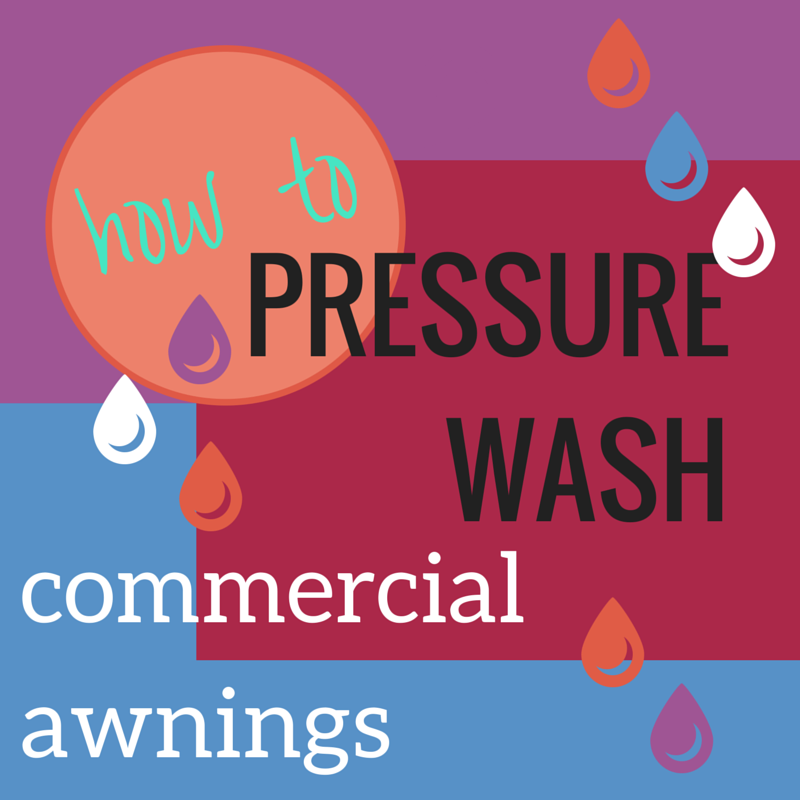Does your business boast beautiful awnings? While they can improve the look of your business and be great for advertising, they tend to be home to accumulated dirt and debris. Here are a few tips on how to effectively clean those awnings:
Regularity: Pressure washing your awnings at least twice a year can extend their life cycle while ensuring that your business looks its best. We all know how important first impressions are. The longer they are left to the elements, the more difficult it is to remove the pollutants that will settle into the awning material.
Begin with Low Pressure: Begin your pressure washing with a 500 PSI or lower setting. Soak the awnings thoroughly, allowing the dirt to loosen.
When Choosing a Cleaner: Every awning material has a manufacturer recommended cleaning agent. It’s best to go with whatever they have suggested. Otherwise, you risk damaging your awning. Whatever you decide, do not use bleach. Bleach will most likely cause the color to fade.
Work from Top to Bottom: Use consistent, broad strokes, keeping the nozzle at least 6-12” from the surface. Start with this distance and move your nozzle in closer if you find some stubborn patches. It’s best to work from the top to the bottom of the awning to avoid streaking.
Use a Brush Attachment for Stubborn Stains. It’s best to add a brush attachment to scrub stains as opposed to increasing the pressure. A brush attachment can often break up tough spots without harming awning material. You can also play around with baking soda as a way to remove stains. Cover the stain with baking soda, let it sit for five minutes or so, and try rinsing off. The baking soda may successfully lift stains away from the awning surface.
Finish with a Final Rinse. Again, keep the pressure low. It’s a good idea to do quick rinses in-between seasonal cleanings. Bird droppings, for instance, should be brushed or rinsed off ASAP, as avian feces contain acid that can injure awnings.
If you’re rolling up the awning for the season, make sure you allow it to dry out completely first. This will minimize mold and mildew growth.
Also, don’t forget to clean underneath the awning, where spider webs may have accumulated. While working around an awning, treat wiring and lighting fixtures with caution, as careless work may cause damage.
Like most power washing tasks, it is often best to entrust your awnings to professionals.

